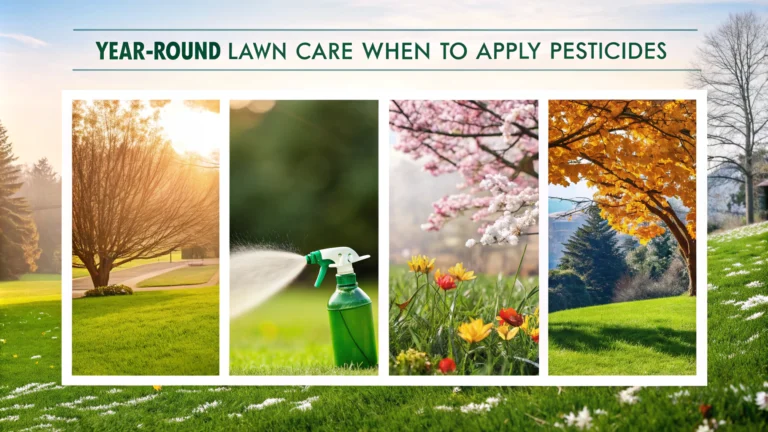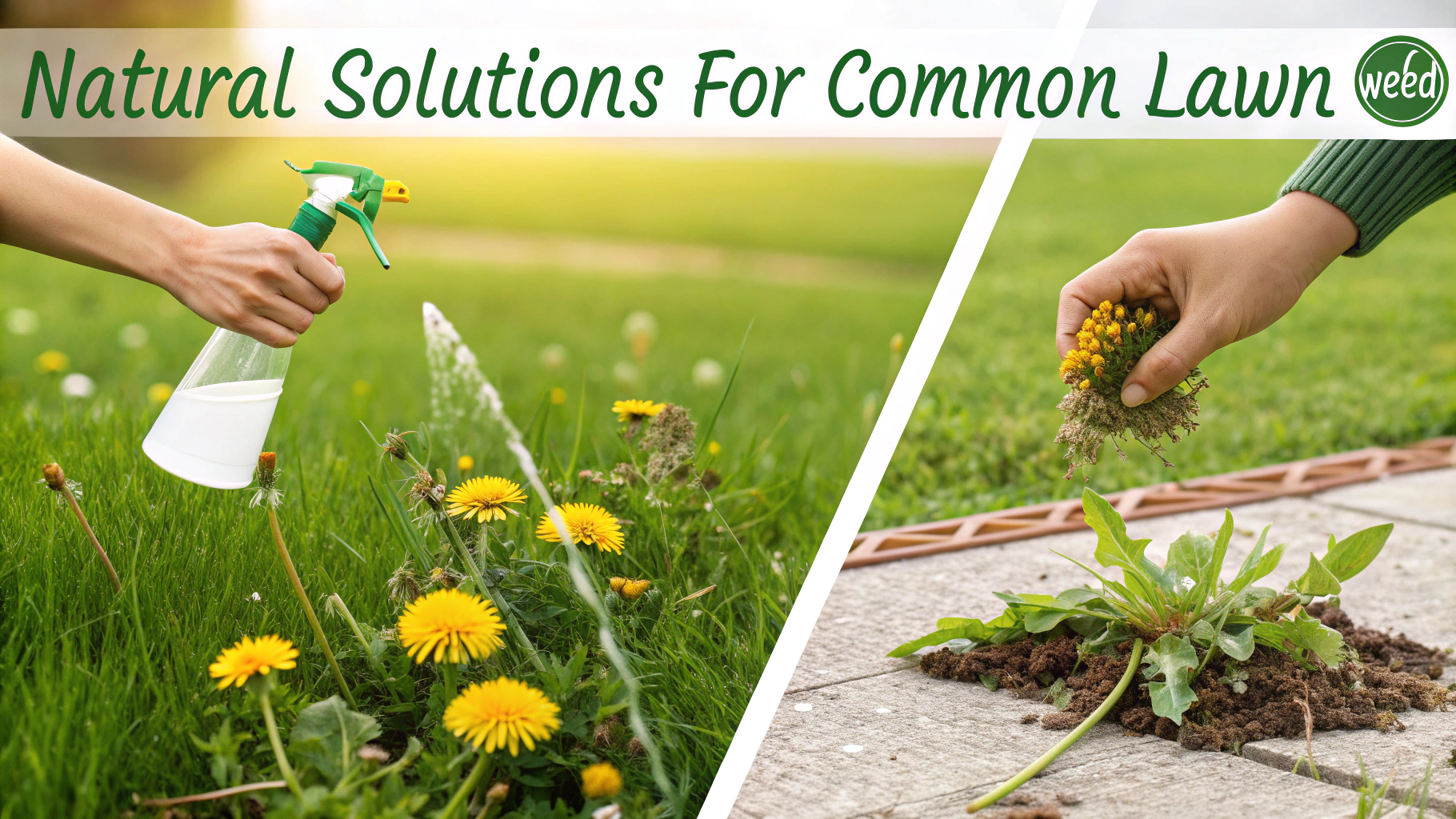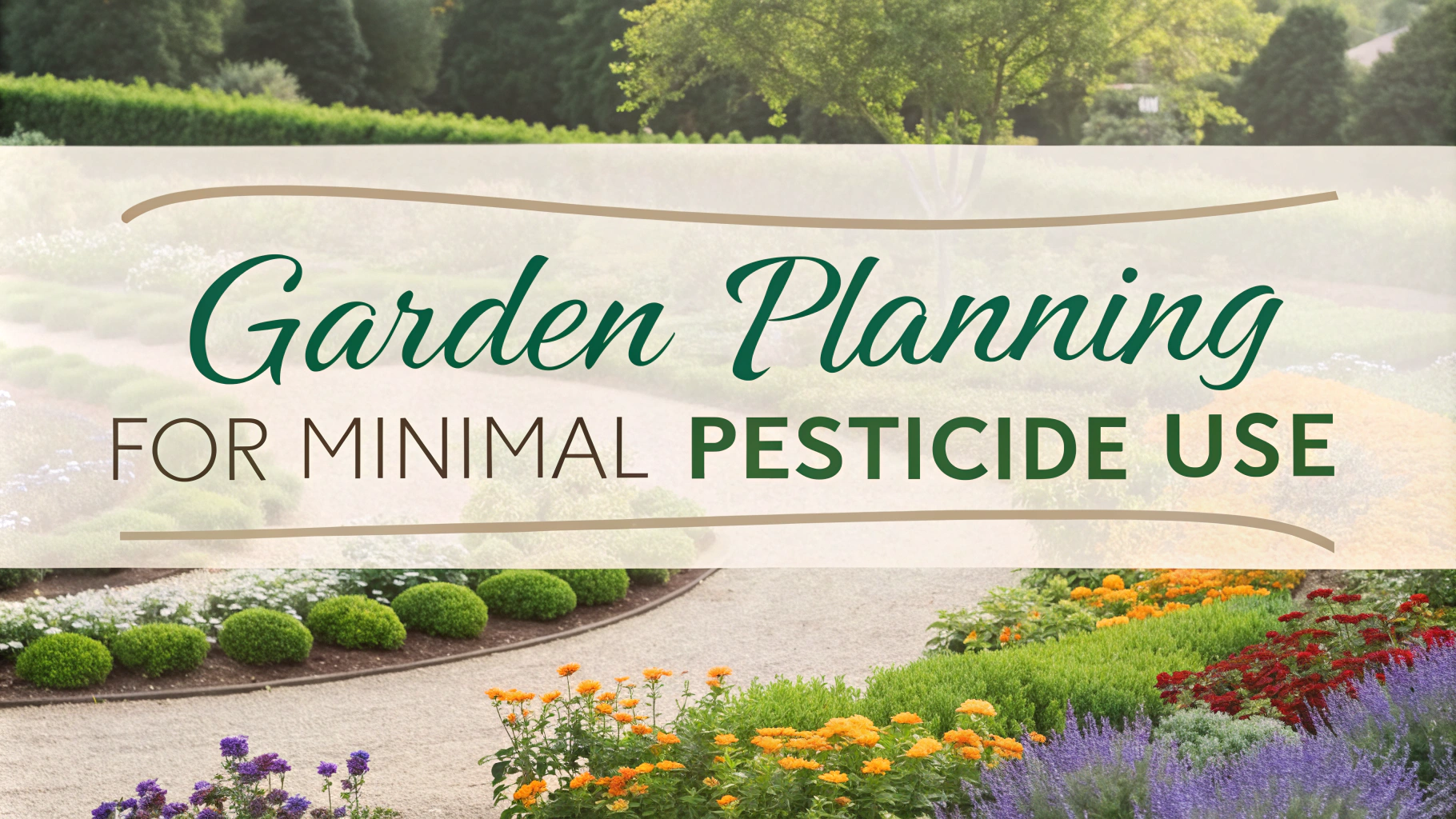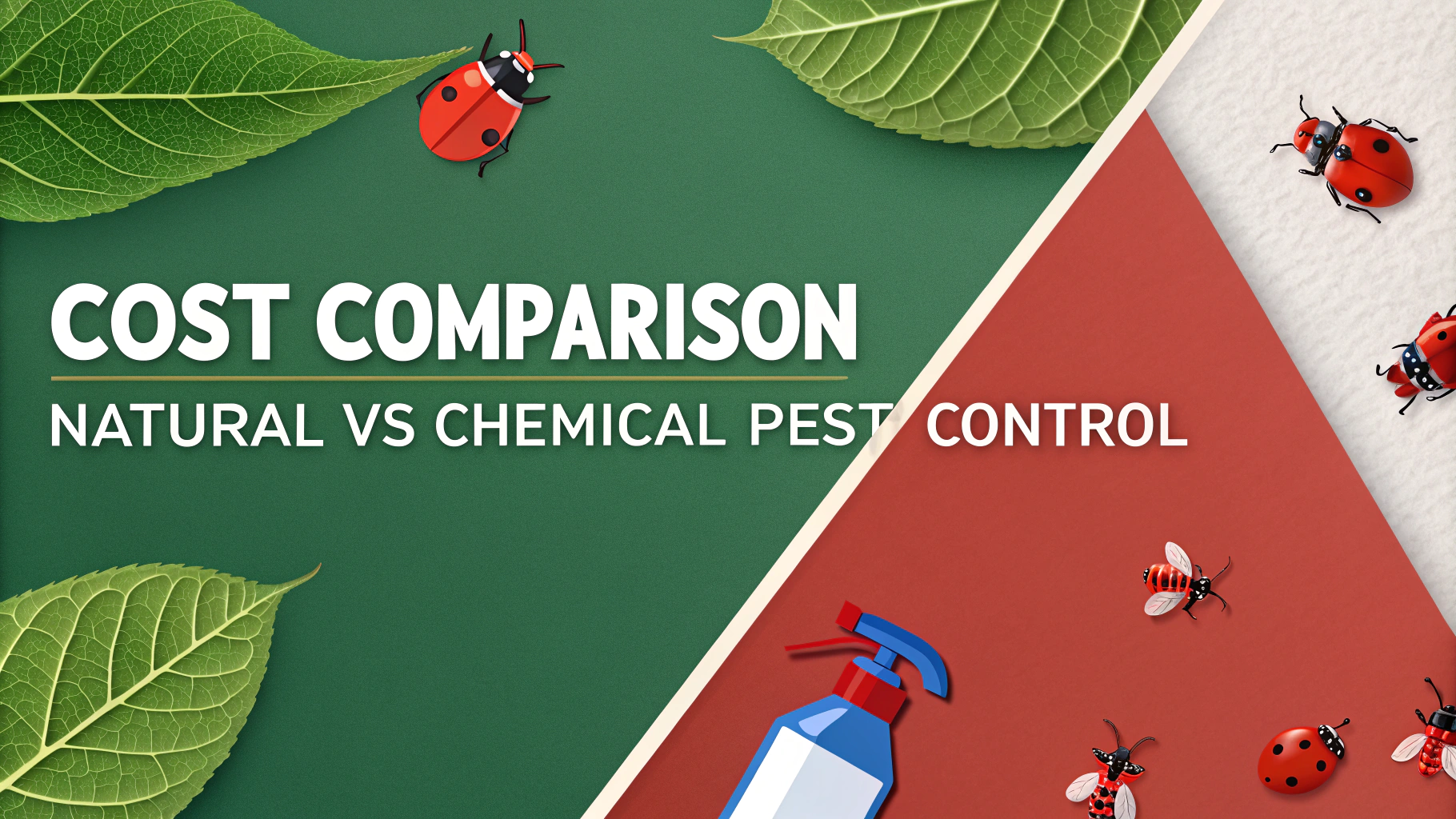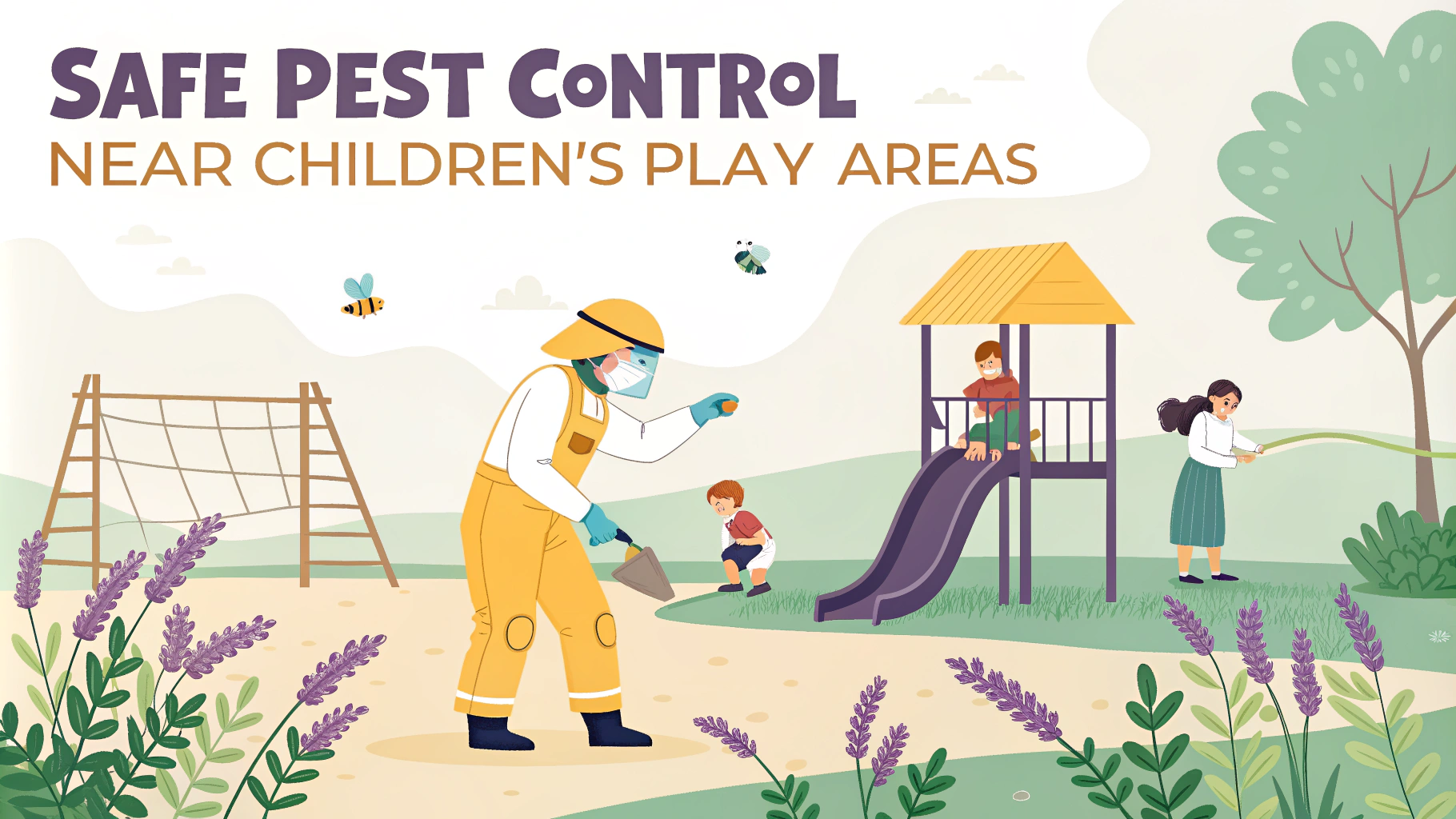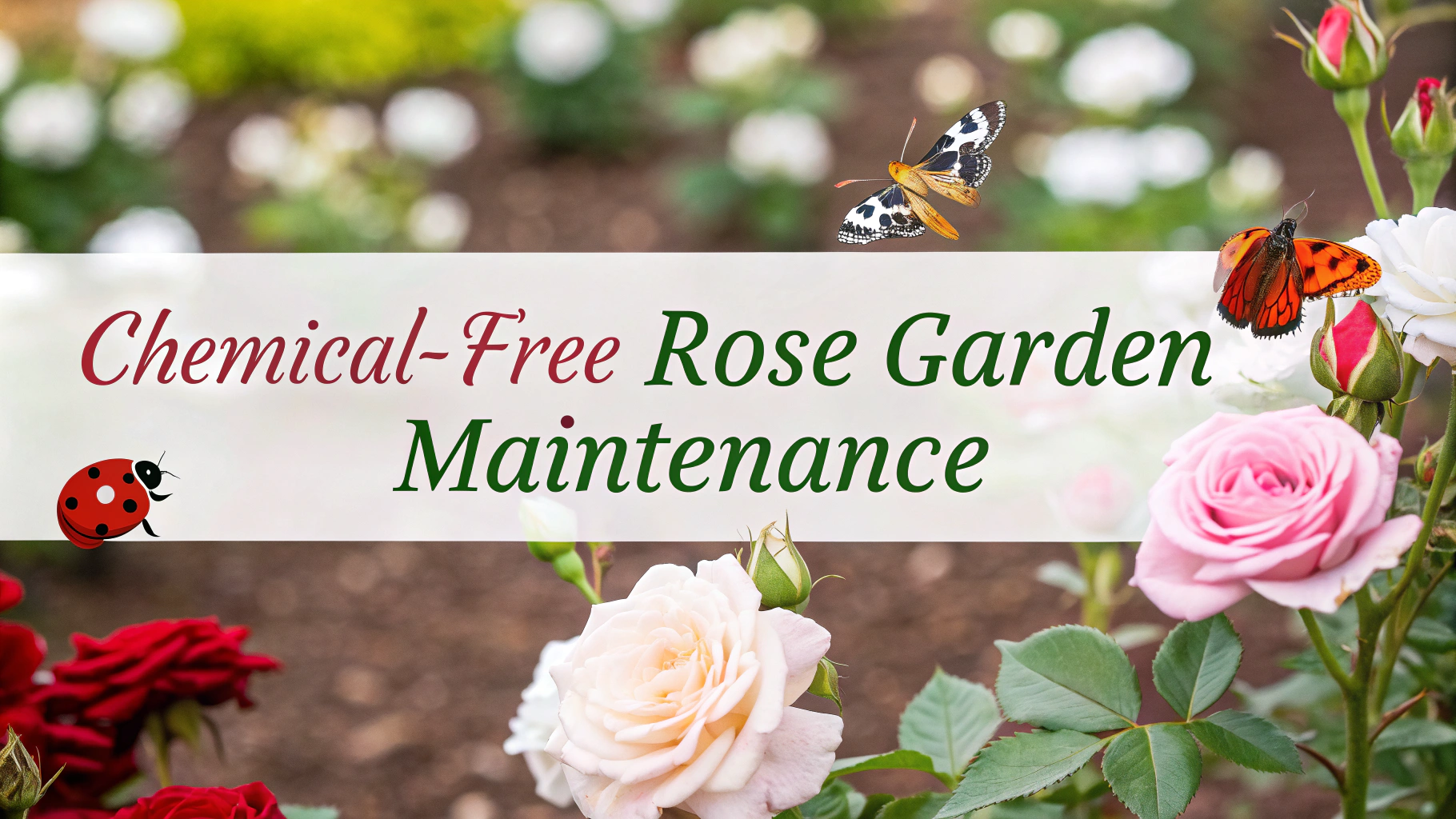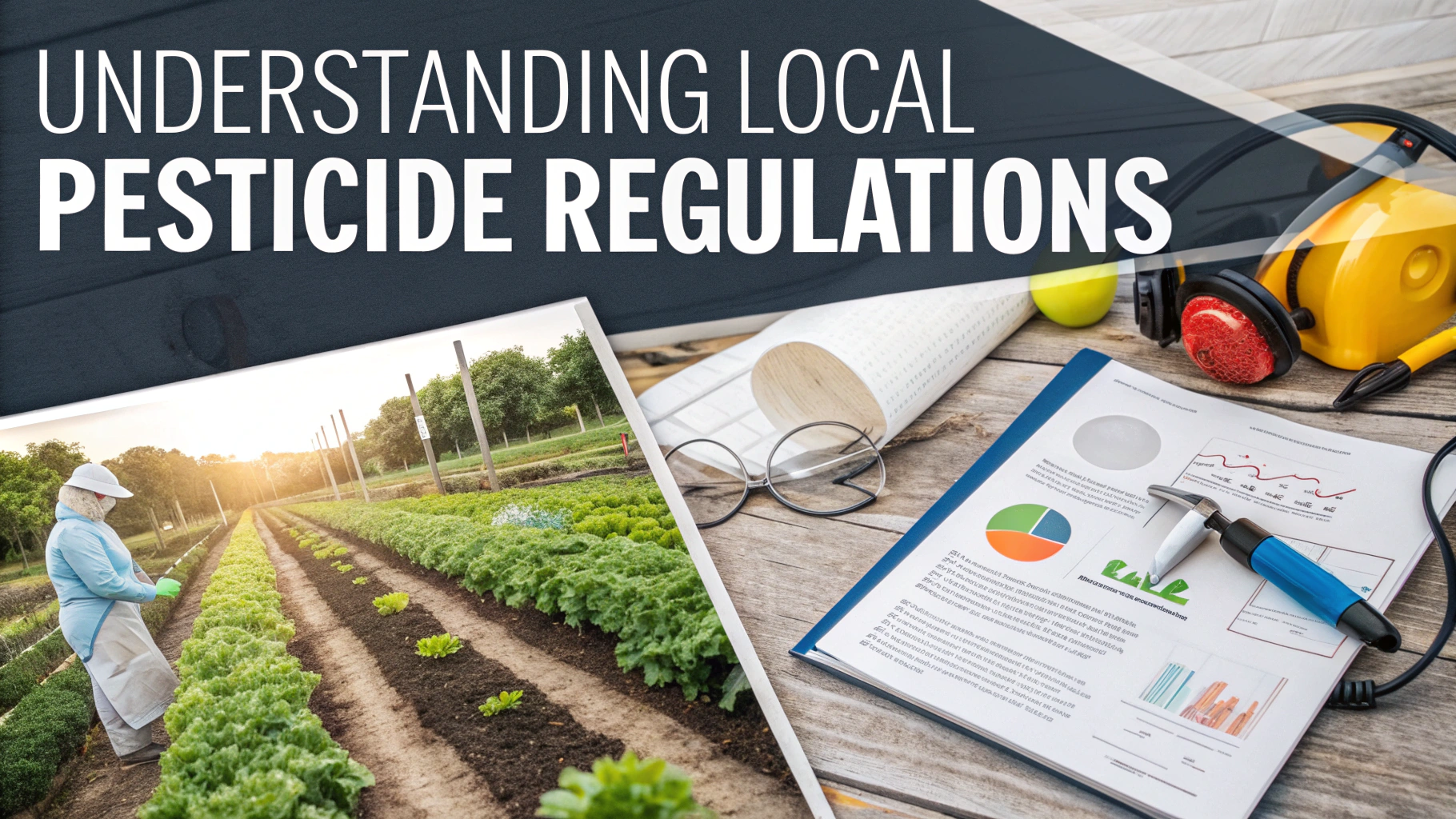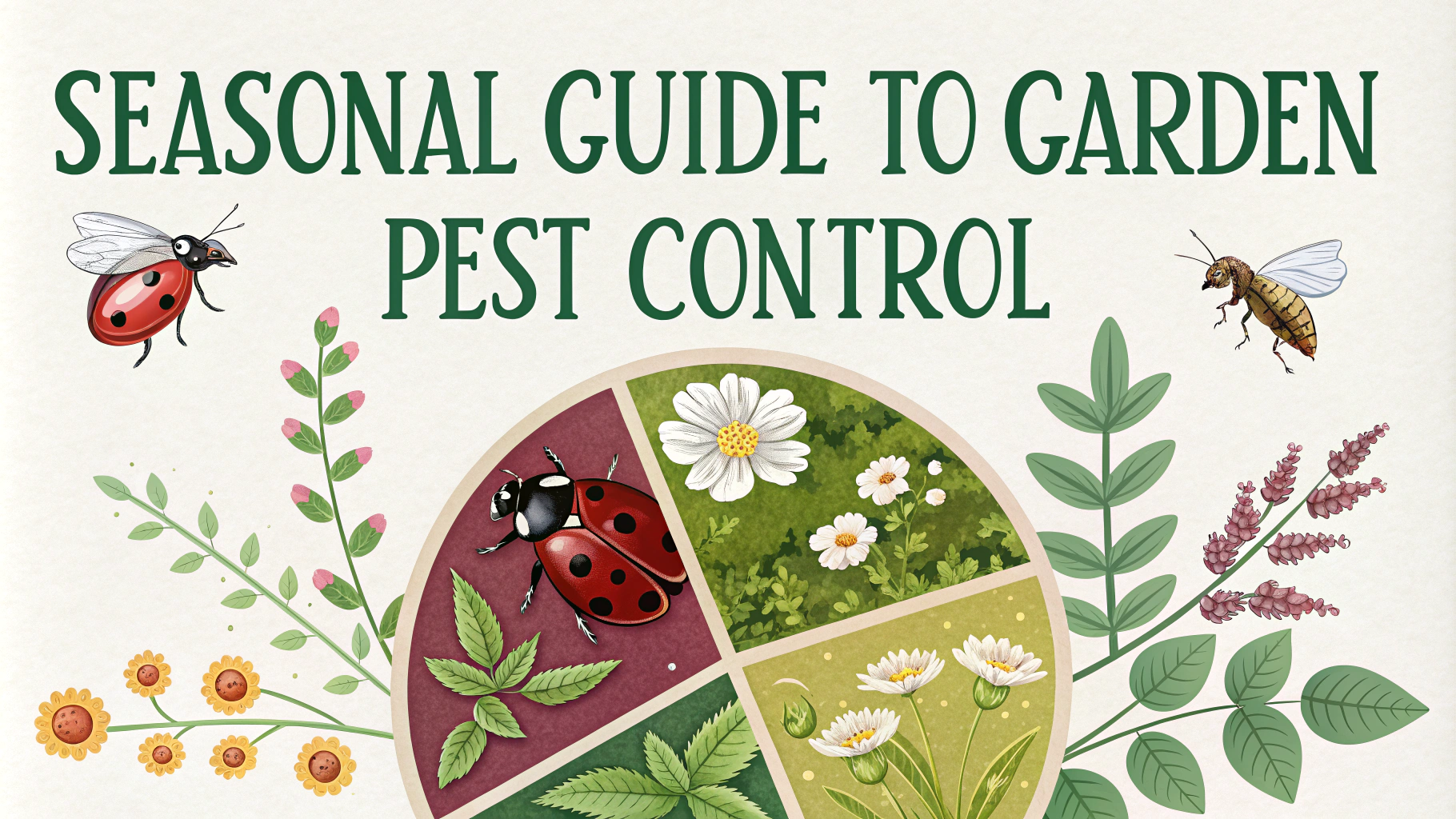Proper timing of pesticide applications makes all the difference in maintaining a healthy, weed-free lawn throughout the year.
Early Spring (March-April)
- Apply pre-emergent herbicides when soil temperatures reach 55°F
- Target crabgrass and other summer annual weeds
- Use products containing prodiamine or dithiopyr
Late Spring (May-June)
- Apply post-emergent broadleaf weed control
- Treat for dandelions, clover, and plantain
- Consider insecticide applications for grubs if there’s a history of damage
Summer (July-August)
Limit chemical applications during periods of high heat and drought stress.
If treatment is necessary:
- Apply pesticides early morning or evening
- Spot treat weeds rather than broadcast spraying
- Water thoroughly before and after application
Fall (September-October)
- Apply broadleaf herbicides for winter weed control
- Use preventive grub control products
- Consider a second pre-emergent application
Safety Guidelines
- Always read and follow label instructions
- Wear appropriate protective equipment (gloves, masks, closed-toe shoes)
- Keep children and pets off treated areas for recommended time periods
- Store pesticides in original containers away from food and water sources
Recommended Products
| Season | Type | Product |
|---|---|---|
| Spring | Pre-emergent | Scotts Halts Crabgrass Preventer |
| Summer | Post-emergent | Ortho Weed B Gon |
| Fall | Grub Control | GrubEx |
For emergency assistance with pesticide exposure, contact the National Poison Control Center at 1-800-222-1222.
Environmental Considerations
- Avoid application before rain or during windy conditions
- Maintain buffer zones near water sources
- Consider organic alternatives when possible
- Practice integrated pest management (IPM) techniques
Alternative Control Methods
- Hand-pulling weeds when soil is moist
- Maintaining proper mowing height (2.5-3.5 inches)
- Overseeding bare spots to prevent weed establishment
- Using corn gluten meal as natural pre-emergent
Common Mistakes to Avoid
- Applying chemicals during wrong temperature conditions
- Over-applying or overlapping treatments
- Treating wet grass or before rainfall
- Ignoring label rate recommendations
Record Keeping
- Document application dates and products used
- Track effectiveness of treatments
- Note problem areas for future reference
- Monitor weather conditions during applications
Conclusion
Successful pesticide application requires careful timing, proper product selection, and adherence to safety guidelines. Following a seasonal approach while incorporating integrated pest management practices helps maintain a healthy lawn with minimal environmental impact. Always prioritize safety and consider alternative control methods when appropriate.
Additional Resources
- Local cooperative extension services
- Professional lawn care associations
- University agricultural departments
- EPA pesticide safety guidelines
FAQs
- What is the best time of year to apply pesticides to my lawn?
Pre-emergent pesticides should be applied in early spring (before soil temperatures reach 55°F), while post-emergent pesticides are most effective when applied during late spring through early summer when pests are actively feeding. - How long should people and pets stay off the lawn after pesticide application?
Generally, wait until the pesticide has completely dried, typically 24-48 hours, before allowing foot traffic. Always check the product label for specific safety instructions and recommended waiting periods. - Should I apply pesticides before or after rain?
Apply pesticides when there’s no rain forecast for at least 24 hours. The product needs time to be absorbed and become rainfast. Applying before rain can cause runoff and reduce effectiveness. - What’s the difference between selective and non-selective pesticides?
Selective pesticides target specific pests while leaving desired plants unharmed. Non-selective pesticides kill all plants they contact, making them suitable only for total vegetation control. - How often should I apply pesticides to my lawn?
Most lawn pesticides should be applied 2-4 times per year, depending on the specific product and pest problem. Over-application can harm beneficial insects and create resistant pest populations. - What safety equipment should I wear when applying pesticides?
Wear long sleeves, long pants, closed-toe shoes, chemical-resistant gloves, eye protection, and a respirator mask if spraying. Always follow specific safety instructions on the product label. - Can I apply pesticides and fertilizer at the same time?
While some combination products exist, it’s generally better to separate pesticide and fertilizer applications by at least two weeks to avoid overwhelming the lawn and to ensure proper absorption of each product. - What temperature is ideal for pesticide application?
Most pesticides work best when applied between 65-85°F (18-29°C). Avoid application during extreme heat (above 85°F) or when temperatures are below 50°F (10°C). - How can I prevent pesticide resistance in my lawn?
Rotate between pesticides with different modes of action, avoid overuse, and integrate other pest control methods like proper mowing height and good drainage to reduce reliance on chemical controls. - What should I do if pesticides aren’t working on my lawn?
First identify the specific pest problem, ensure correct timing and application method, consider resistance issues, and consult with local extension services for alternative control methods or different product recommendations.
